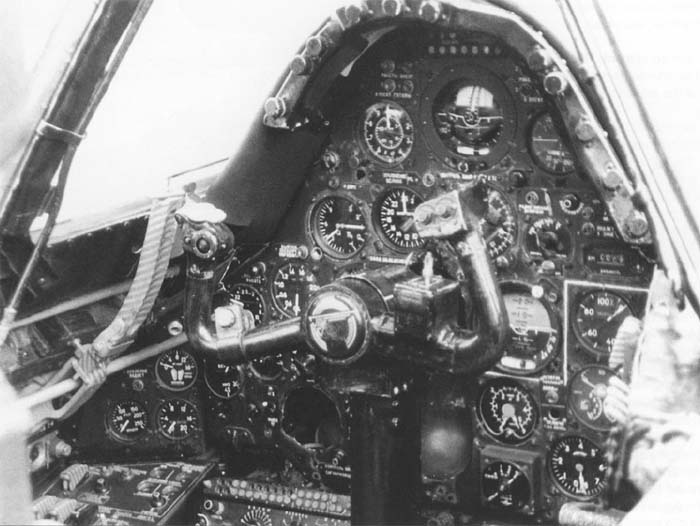I can’t exactly put my finger on what it is with about this aeroplane that I like so much. Maybe it’s the lovely wing-sweep angle and the slim area-ruled fuselage*. Maybe it’s the typically down-to-earth practical Soviet solution to a problem unique to their country, as it was (of course, the Soviet bloc has now broken up). Possibly it’s the idea of a dedicated pure interceptor designed solely to shoot down enemy nuclear bombers over huge mission distances. Or perhaps it’s the whole ‘Cold War’ flavour of the whole thing; an aeroplane which, when it was designed, was at the forefront of its technology era. And based at freezing cold, snow-covered airfields in some of the most remote places on Earth.
The Tu-128 is the largest interceptor ever built, measuring nearly 100ft long and with a 57ft wingspan. Although its NATO reporting codename was ‘Fiddler’, the initial ‘F’ signifying a fighter, this aircraft was never designed to go into combat with other fighters. The Tu-128 was designed purely to shoot down intruding enemy nuclear bombers, those entering Soviet territory over the more remote of their borders.
Some understanding of this huge aircraft can be gained by looking at an atlas. What was then called the Soviet Union had an air defence problem of truly mammoth proportions, and no amount of money could ever provide a totally comprehensive defence of the entire frontier. While most of the Soviet Union’s population and industry (and therefore the really heavy air defences) was concentrated in Western regions, there were still many important regions in the interior of that vast country which would have been vulnerable to attacks from aircraft entering via the more remote frontiers, for example, from the Arctic Ocean direction and/or over Siberia.
The aircraft had to be so big in order to house all the fuel necessary for it to be able to fulfil its role, that of ‘long-range interceptor’. It would most likely have been used to mount standing patrols in times of tension, and then directed to its targets by radar-equipped airborne warning and control systems (AWACS). Certainly the aircraft would have been vectored (steered) to its target by radar controllers, whether ground-or air-based, because the speeds and distances involved would have been so great.
We can understand, then, that the operational requirement for the role was for a supersonic aircraft with enormous fuel tanks for both a good patrol time and a long range, a capable radar, and the most powerful air-to-air missiles possible. And so they came up with the 43-tonne Tu-128, of which weight about a third was taken up by fuel. It was capable of Mach 1.5 speed, and with a combat radius of about 1,600 miles and an armed ceiling of about 51,000 feet. However, with a maximum g-loading of only 2.5g, it was certainly never going to be dogfighting with small fighters. But that wasn’t what it was designed for anyway.
Armed with four Bisnovat R-4 air-to-air missiles (NATO codename AA-5 ‘Ash’), two of which were radar-homing and two of which were heat-seekers, a Tu-128 would likely have been more than capable of knocking down one or two American B-52s, should the unthinkable ever have happened.
Here’s a series of shots showing the crew getting out of their aircraft, and then the instrument panels in the front and rear cockpits respectively.
I get the impression that the whole operation would have been carried out mainly by remote direction; a radar controller would detect targets and guide the interceptor into the correct position for it to acquire the target using its own radar, and then it would proceed to attack the bomber using its own fire-control systems. All the time, the pilot himself would have been only the driver, obeying commands from the ground or AWACS plane at first, then relying entirely on the radar officer in the back seat to complete the weapons acquisition and release. But it would get the job done.
I particularly like this fascinating picture; you can see where there’s been a dog patrol walking round the aircraft, and also where the ground crew have been walking around her in order to clear snow and ice from the airframe:
Here’s another of my favourite shots of this aeroplane – the supersonic area-rule design* is clearly visible, and you get a good look at all four of the missiles on their pylons:
This next shot is a classic Russian winter shot, in Siberia perhaps?
So, there she is, the Tu-128 ‘Fiddler’; an odd-looking aeroplane in many ways, but she certainly has a fascination all of her own. Another ‘Beautiful Destroyer’.
*Area-ruling is an aerodynamic principle seen in most supersonic aircraft, that is, those that can fly at speeds faster than the speed of sound. It can be seen easily in the Tu-128 in the views from above; the ‘wasp-waisted’ shape of the fuselage is the key giveaway. The fuselage is wider nearer the front, tapers inwards to a narrower ‘waist’ and then flares outwards again towards the rear.


















